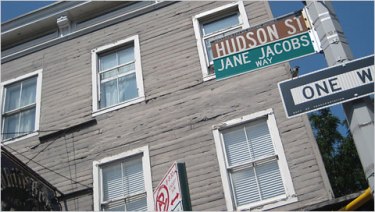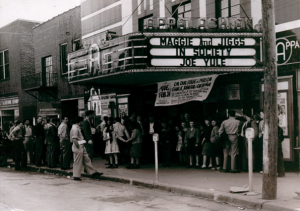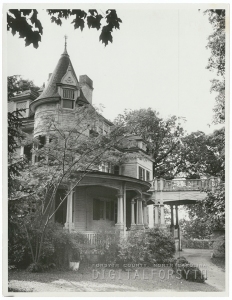According to Facebook, some people spent their Spring Breaks soaking up sun on a sandy beach. I spent it schlepping across New York City with a group of UNCG historic preservation students, soaking up knowledge, and I couldn’t be happier about it. The New York trip came on the heels of an inspiring and incredibly educational visit to Washington, D.C., for the annual Preservation Advocacy Week, sponsored by D.C.-based Preservation Action. [Side note: Speaking of heels, among the valuable lessons I learned was that wearing high-heeled shoes in either city is not of the faint of heart.] Squished in between the two, I got to meet Wendy Hillis of Preservation Durham, the advocacy group in a city that is a poster child for how preservation inspires positive change.
Why, yes, I am exhausted. But also incredibly inspired.
This is really the first chance I’ve had to process any of these experiences, and while I really should be reading about the New Deal for my U.S. History class, I want to take a bit of time to reflect on some of the things I’ve been able to do and learn, interspersed with some interesting preservation news from around the country. I’ve narrowed it down to five themes, which I have split into separate posts for the sake of time (yours and mine both). The first one follows.
1. My Jane Jacobs experience.
Perhaps my biggest preservation-nerd moment in New York was in Greenwich Village on a post-dinner stroll back to the subway. Somehow I was the navigator of the group, which I attribute to my iPhone skills more than my sense of direction (which is pretty much non-existent, to the constant frustration of my husband), and I glanced to the street sign to make sure that we were on the right path. We were, but even more exciting was that we were walking down Jane Jacobs Way (a.k.a., Hudson Street). I know, a preservation cliché if there ever was one. Whatever. I’m not ashamed to admit that I get all swoony when someone invokes Jacobs’ name, not to mention when I can invoke her name, in conversation (yes, that happened and yes I was quite pleased with myself).
I first read Jacobs’ book Death and Life of Great American Cities last semester (thanks, Autumn), and was, like so many others, blown away by her observations. Even more stunning to me was that she wrote it fifty years ago. And yet, cities still continue to make the same mistakes over and over again as they try to force inadequate solutions onto neighborhoods. More recent philosophies like New Urbanism have taken many of Jacobs’ lessons to heart, but ultimately their creations turn out bland, inauthentic, and unnatural. But as many have noted, historic neighborhoods naturally have all of the qualities valued by New Urbanists and their ilk, and, more importantly, have what new, contrived communities lack: soul. Donovan Rypkema has lots of great quotes about why “old urbanism” is more effective than “new urbanism” (one thing I’ve learned is that if I ever need a preservation pick-me-up, Rypkema is generally a good source of inspiration), like in this 2007 keynote address where he responded to a list of principles (mixed use, open space, pedestrian friendly, etc.) heralded by advocates of New Community Design:
Great list. But you know what? We don’t need new community design to rescue us. That list of principles is exactly what our historic neighborhoods are providing right now. We just need to make sure they are protected.
I agree that good urban design is a part of “Quality of Life”. But ultimately quality of life will be determined by five senses: the sense of place, the sense of evolution, the sense of ownership, the sense of identity and the sense of community itself
This concept is nothing new for preservationists, but Jacobs’ ideas have been getting some press recently (appropriate since March is Women’s History Month and Jacobs is recognized as one of the field’s most prominent and passionate female activists). A recent article in The Atlantic Cities highlighted a new study being published in the upcoming issue of the journal Urban Studies that addresses Jacobs’ theory that “healthy neighborhoods must ‘mingle buildings that vary in age and condition, including a good proportion of old ones.’” Eric Jaffe writes that Duke sociologist Katherine King sought empirical evidence that Jacobs ideas about “gradual (as opposed to grand) redevelopment carries a number of possible social implications—a chief one being that it should promote stronger community relationships.” Using Chicago neighborhoods as a case study, King established four metrics to measure social ties and “age diversity” of buildings. Her findings revealed that, lo and behold, Jacobs was onto something! She concluded:
Empirical results show significant links between housing age diversity (historical development pace) and four measures of neighbourly social relations, even when controlling for other neighbourhood housing features, social composition and individual sociodemographics. It may be that gradual redevelopment preserves community ties, which may take decades to form and which new residents may ‘inherit’ from previous neighbours.
Someone probably needs to send this article to the New York City Housing Authority, because apparently they haven’t been paying attention. On a Tenement Museum tour of the Lower East Side (If you haven’t been there yet, go now! No really! Now! It’s amazing!), our tour guide Matt told us that the city was hatching a plan to capitalize on the neighborhood’s rising real estate value. You can read more about it here, but basically, the city is going to lease land adjacent to housing projects (ironically the vacant lots were meant for more projects that were never completed) to developers who will build high-rise apartment buildings with mostly “market-rate” (i.e., high-end, unregulated) apartments with some token “affordable housing” thrown in.
In theory, mixed-income housing creates less social isolation and provides opportunities for public housing residents to break out of the poverty cycle. And in cases where this kind of mixed-income residences occurs organically, it would be effective. But in cases like this, when the NYCHA imposes it from above, it creates resentment and discord and threatens to displace long-time residents from their home. Granted, this isn’t a preservation issue, per se, but it speaks to the larger point that Jacobs was trying to make. This new NYCHA plan is the same kind of grand scheme that she fought against fifty years ago; she argued that they didn’t work then (and King’s research has now verified her claim), and it’s unlikely they will work today. The Lower East Side is such a vibrant, diverse, amazing place with an incredibly rich history. This new plan threatens all of that.
So, as I strolled along Jane Jacobs Way in her beloved Village, I felt a little discouraged. If nothing has changed in all these years, will it ever? But in the end, I found encouragement in the memory of the woman who went up against some of the most powerful men in New York City and, against all odds, won.


